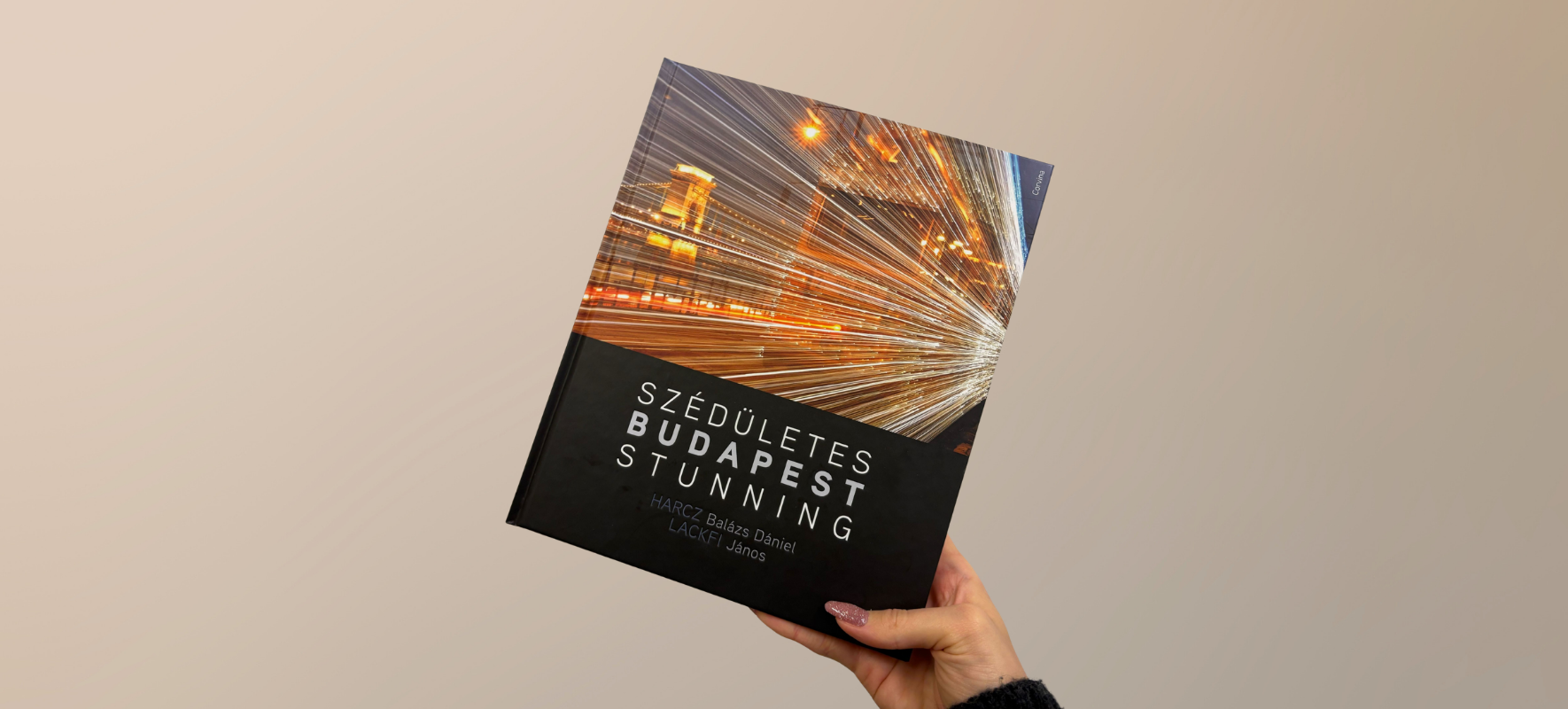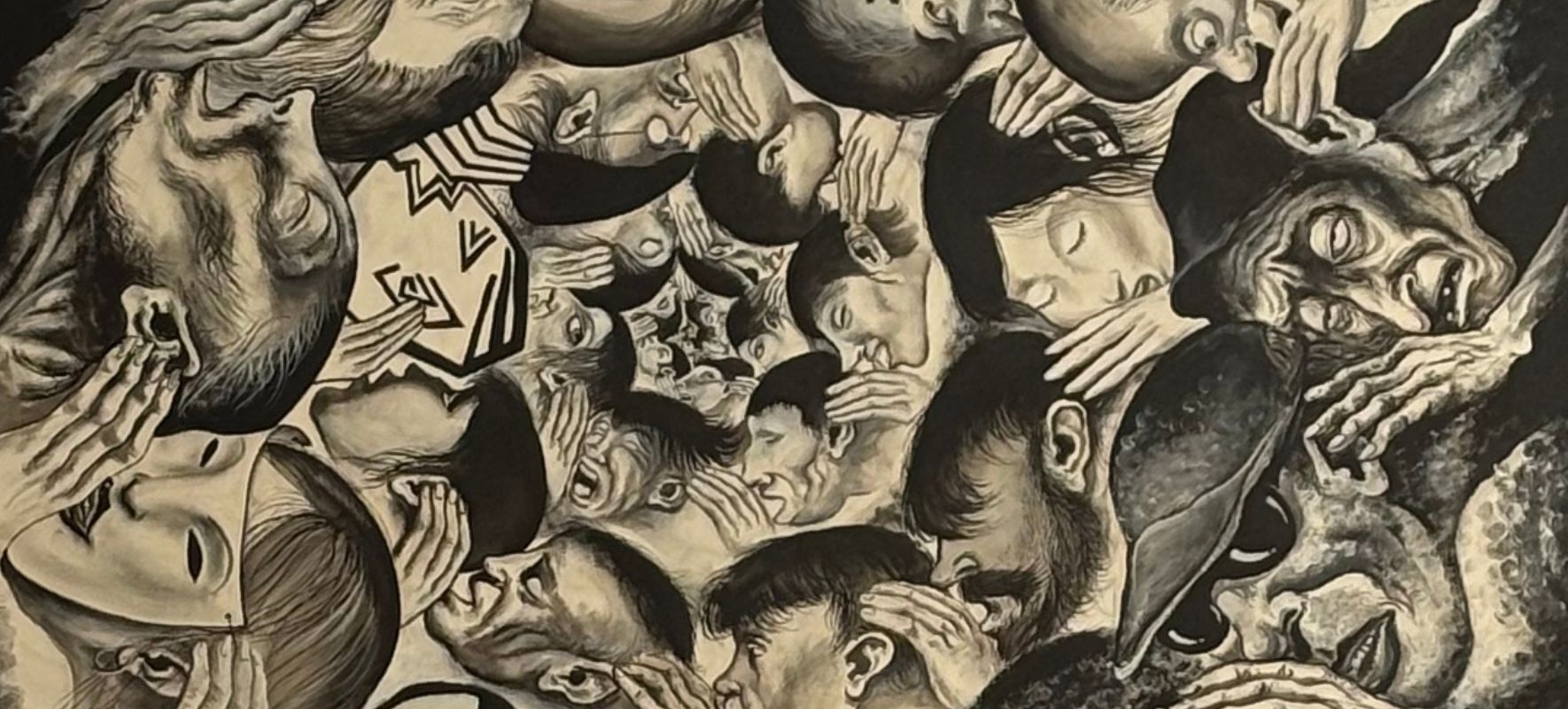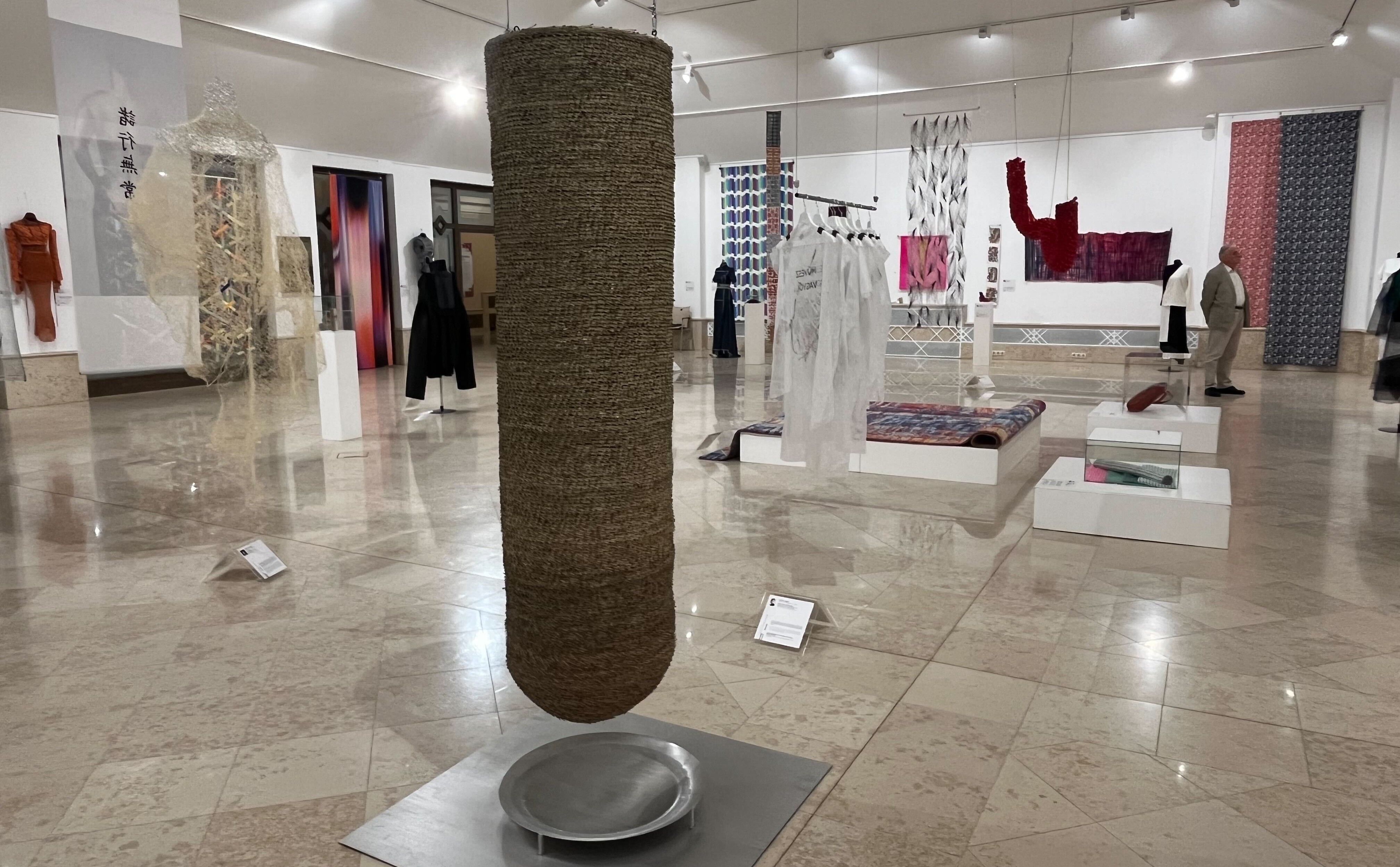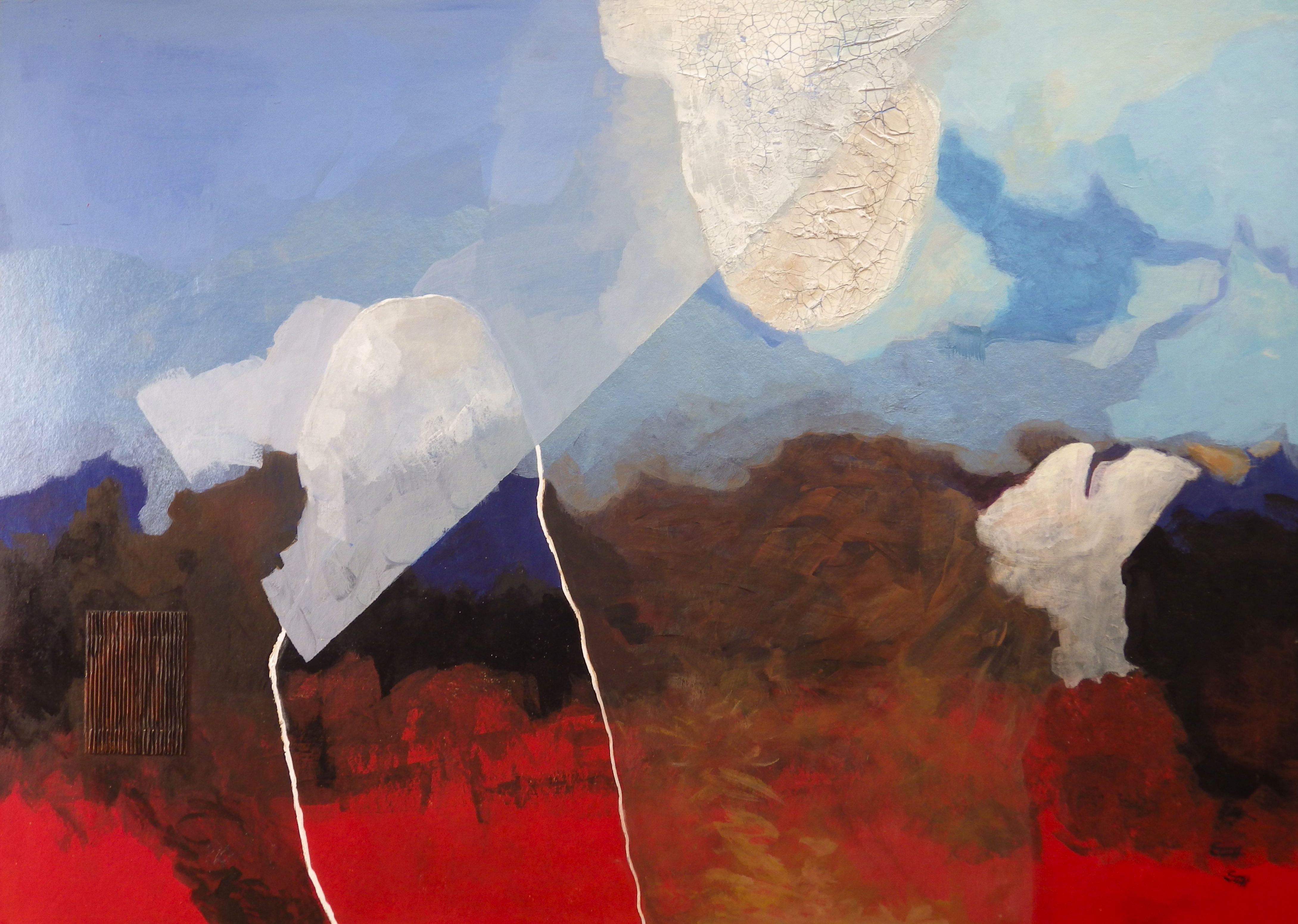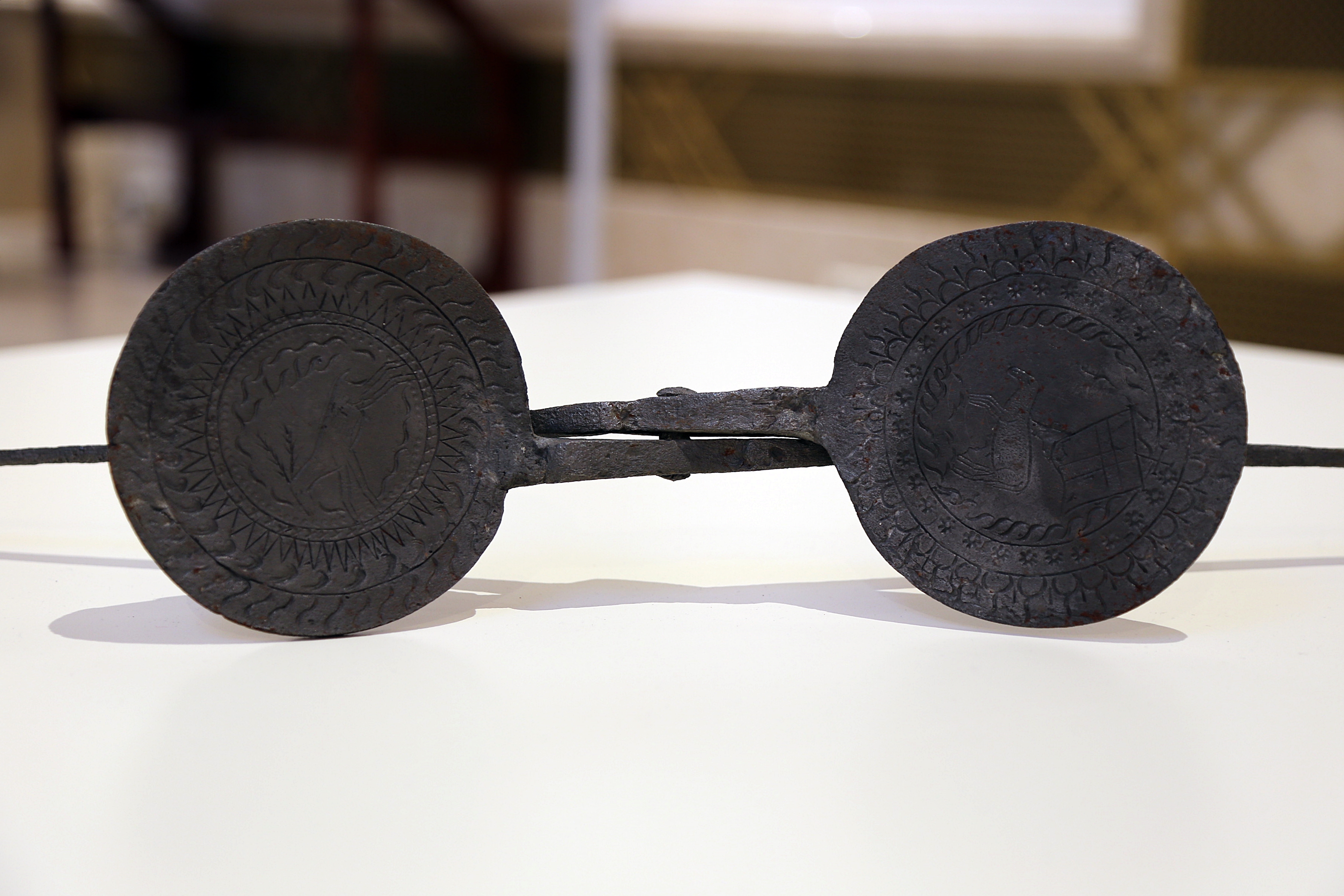
Work of Art in Focus
17th or 18th century, wrought iron (offered for exhibition by the Village and Folk Tradition Preservation Society of Újkér)
This baking griddle was offered to feature at the exhibition "Agnus Dei" as the work of art in focus for the month of December by the Village and Folk Tradition Preservation Society operating in the Győr-Moson-Sopron County based village Újkér. The exhibition showcases numerous similar objects but this special piece is of outstanding importance: as opposed to the other objects, this griddle was likely to have been prepared for a solely secular purpose in mind.
Baking griddles, typically made of wrought iron, contain two handles, which move just like a pair of scissors, and a so-called baking press, which is either round or square, and features different imprinted patterns. For baking Communion bread, one also needs a cutter, which was used – just like a biscuit cutter – for cutting the bread the right size and shape. The part of the griddle with the baking press was warmed to a high temperature, and the baking sheets were greased. The dough – made of flour, milk, water and eggs – was poured on one of the sheets. Then the dough was baked between the two sheets after they have been closely shut. This resulted in a baked piece of Communion bread with an uneven edge: using the cutter, the edge was finally evened out to get a round piece of bread. The patterns featured by baking griddles were prepared using chiselling or impacting techniques. Chiselling was a finer job and was executed by goldsmiths, while impacting was usually done by simple blacksmiths who were skilled enough to do this job. For this reason, baking griddles featuring impacted patterns are also important pieces of folk art. This baking griddle, originating from the village of Újkér, features an impacted pattern of a stag: one of the oldest Christian symbols.
The Hungarian word ostya for Communion bread originates from the Latin word hostia, which means "sacrifice". At the beginnings of Christianity (in old Christian times), the celebration of the Eucharist entailed having a common meal: the custom of sharing the first bread originates from the tradition of blessing wine and grapes prior to the celebratory dinner (Kiddush) consumed at the time of the Eucharist festivities. The ingredients and the ways of preparation of (leavened and unleavened) bread and of Communion bread have changed several times during the years, and many beliefs are also associated with these ingredients and ways of preparation. Such a belief or educational story includes a legend associated with witch trials: accordingly, a witch does not swallow the bread at the Holy Communion but keeps it under her tongue and spits it out later. If anybody was noticed doing so at church, it became obvious that the person was a witch. Already in the Early Middle Ages, the Church severely punished those who violated the celebration of the Holy Communion. In order to fight against such blasphemous acts, even a Synod Decision was passed.
Another custom associated with Communion bread is the tradition of distributing Communion bread at Christmas time, which is still practiced as part of Christmas celebrations in some villages in Northern Hungary and in the regions of former Historical Upper Hungary. For a long time, each parish was responsible for preparing its own Communion bread at its own cost, and this has given rise to a tradition of collecting donations at Christmas time. During the fast at Christmas, priests used to present the inhabitants of their parish with blessed bread and Communion bread as Christmas gifts. Later, it was no longer priests that delivered the gifts but sextons and altar boys. In fact, several poems and songs commemorate this act of delivering Communion bread to houses. Some of these songs are also featured at Pesti Vigadó's current exhibition "Agnus Dei".

